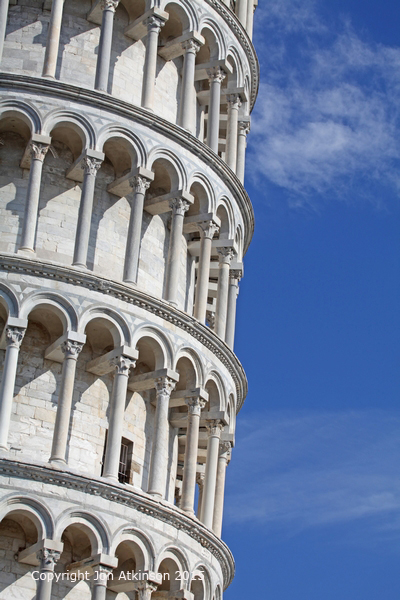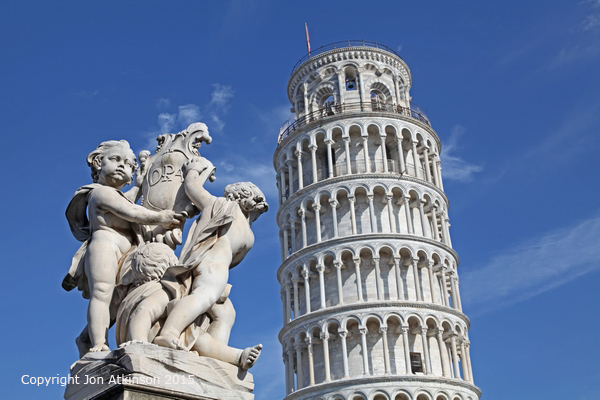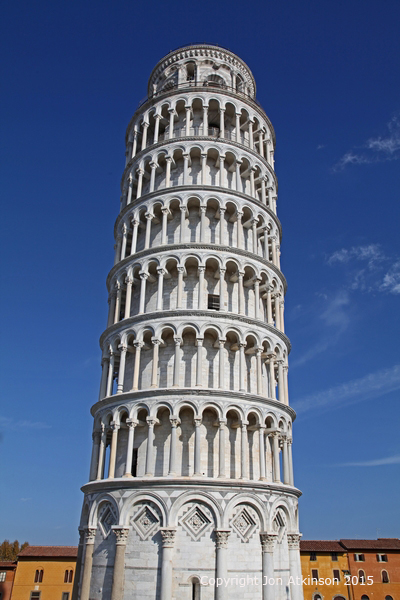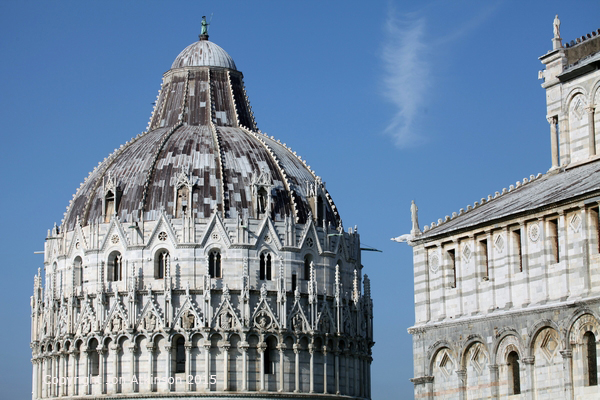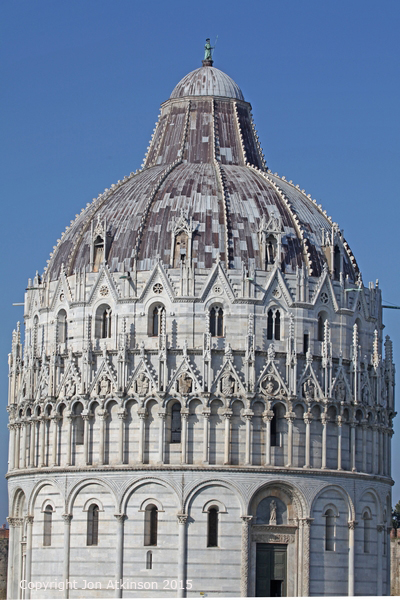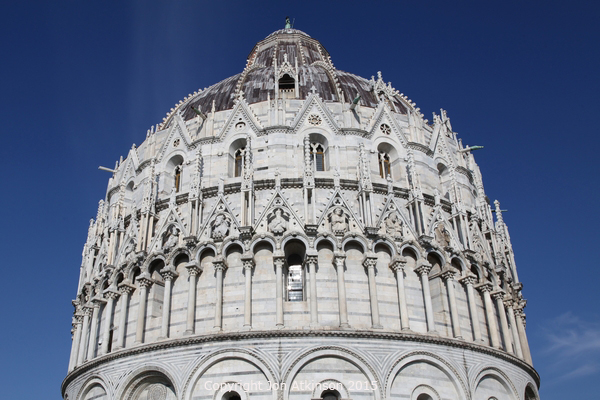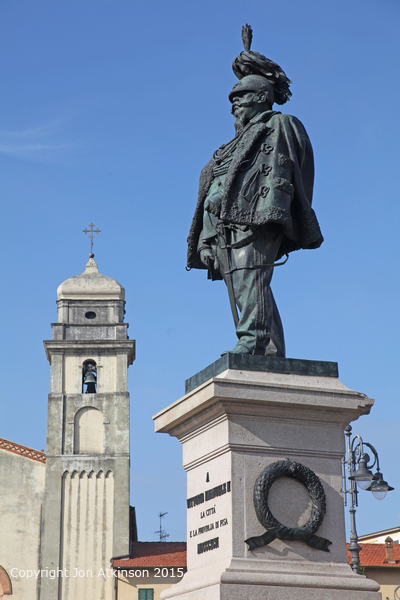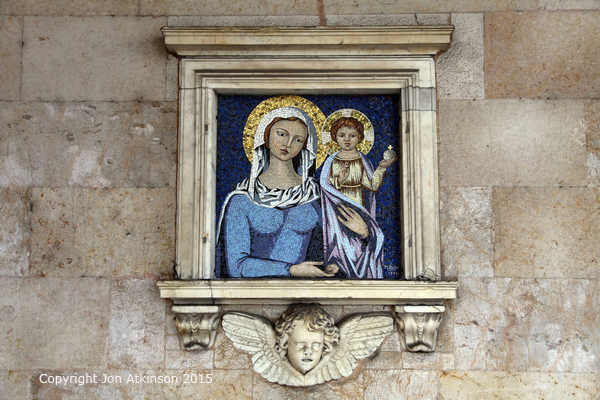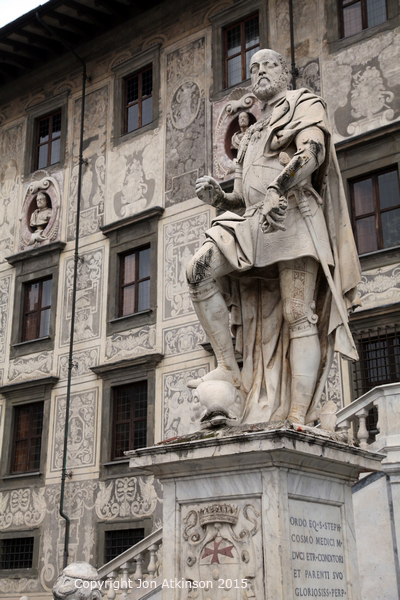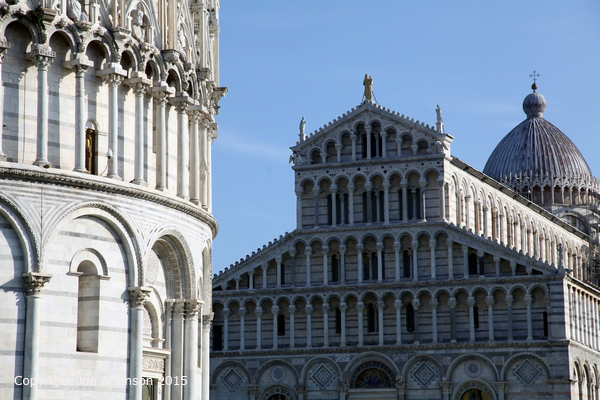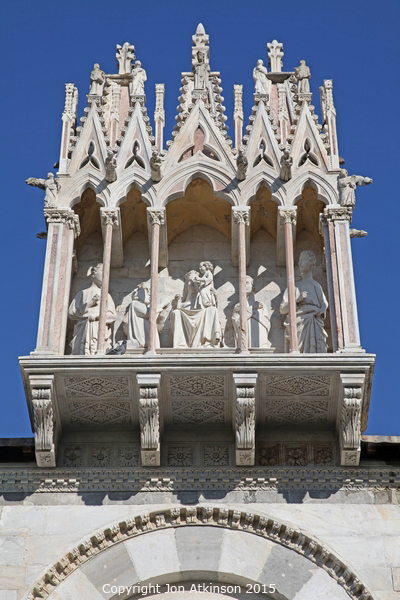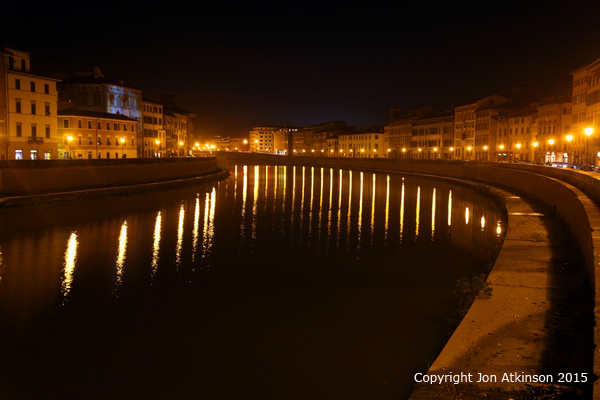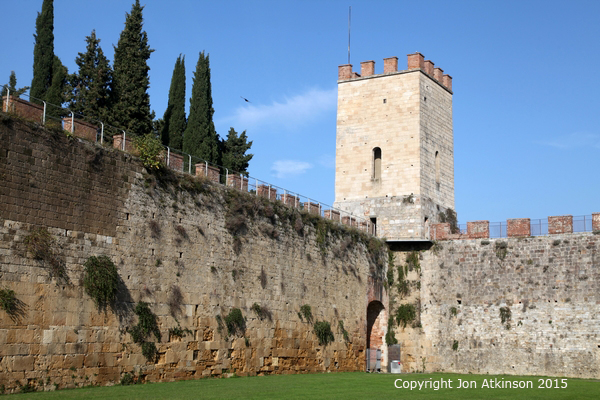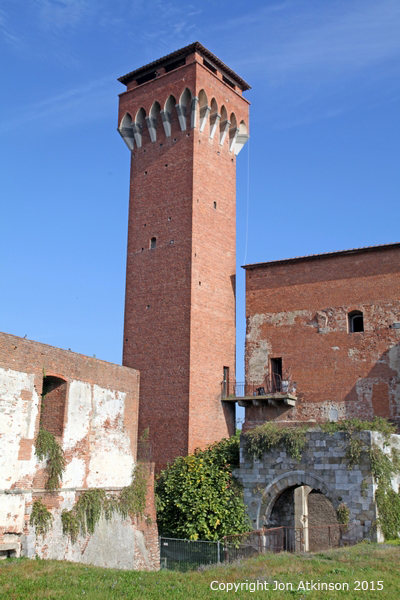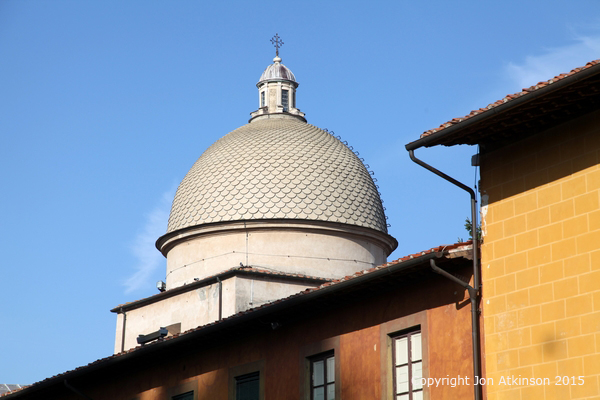Pisa 1 - The Leaning Tower of Pisa: The Leaning Tower of Pisa (Italian: Torre pendente di Pisa) or simply the Tower of Pisa (Torre di Pisa) is the campanile, or freestanding bell tower, of the cathedral of the Italian city of Pisa, known worldwide for its unintended tilt. |
Pisa 2 - The Leaning Tower of Pisa: The tower's tilt began during construction, caused by an inadequate foundation on ground too soft on one side to properly support the structure's weight. The tilt increased in the decades before the structure was completed, and gradually increased until the structure was stabilized (and the tilt partially corrected) by efforts in the late 20th and early 21st centuries. |
Pisa 3 - The Leaning Tower of Pisa: The height of the tower is 55.86 metres (183.27 feet) from the ground on the low side and 56.67 metres (185.93 feet) on the high side. The width of the walls at the base is 2.44 m (8 ft 0.06 in). Its weight is estimated at 14,500 metric tons (16,000 short tons). The tower has 296 or 294 steps. |
Pisa 4 - Baptistry: Begun in 1153 in a Romanesque style and completed in the 1363 in the Gothic style, the Baptistery in Pisa (Battistero di San Giovanni) was built to replace an older Baptistry and is the largest in Italy. It contains some important furnishings, including a font and Pisano pulpit. |
Pisa 5 - Baptistry: The Baptistry is constructed of marble and is 54.86 meters high, with a diameter of 34.13 meters. The lower section is built in the Romanesque style, notable for it's rounded arches, while in contrast the upper sections are in the Gothic style, with pointed arches |
Pisa 6 - Baptistry: Constructed on the same unstable sand as the tower and cathedral, the Baptistry leans 0.6 degrees toward the cathedral. Originally the shape of the Baptistry, according to the project by Diotisalvi, was different. It was perhaps similar to the church of Holy Sepulchre in Pisa, with its pyramidal roof. |
Pisa 7 - Garibaldi Statue: The bronze statue of Giuseppe Garibaldi constructed in 1892 by Ettore Ferrari and cast by the Crescenzi foundry in Rome. As with similar statues in other cities in Italy of the “hero of two worlds”, this Roman sculptor shows the person life size and in an anti-hero stance. |
Pisa 8 - Mary and Jesus, Palazzo Gambacorti: Mary and Jesus mural (Madonna e Gesù Bambino) on the wall of the Palazzo Gambacorti. This building, now the Town Hall, is the result of a long history of adaptations and additions that, archaeological investigations have shown, began in mid 11th century, when a casa torre (tower house) now incorporated into the south side of Palazzo Gambacorti, was built between Via Toselli and Via degli Uffizi. |
Pisa 9 - Statue of Cosimo I: The statue of Cosimo I de' Medici stands in the middle of Knights' Square of Pisa, just in front of Palazzo della Carovana. It was commissioned by Grand Duke Ferdinando I in 1596 to the Franco-Flemish sculptor Pietro Francavilla, who executed it in the elegant Late Mannerist tradition. The statue celebrates Ferdinando's father as the first Grand Master of the Order of the Knights of St. Stephen and is a civic symbol of the hegemony of Florence.
|
Pisa 10 - Cathedral: At the heart of the Piazza del Duomo is the Duomo, the medieval cathedral of the Archdiocese of Pisa, entitled to Santa Maria Assunta. Its construction began in 1064 by the architect Busketo, and set the model for the distinctive Pisan Romanesque style of architecture. The mosaics of the interior, as well as the pointed arches, show a strong Byzantine influence. |
Pisa 11 - Camposanto Cemetery: The Campo Santo, also known as Camposanto Monumentale ("monumental cemetery") or Camposanto Vecchio ("old cemetery"), is a historical edifice at the northern edge of the Cathedral Square in Pisa, Italy.
|
Pisa 12 - Night View River Arno: The Arno is the most important river of central Italy after the Tiber. With a length of 241 kilometres (150 miles), it is the largest river in the region. Origionating on Mount Falterona in the Casentino area of the Apennines passing through Florence, Empoli and Pisa before flowing into the Tyrrhenian Sea at Marina di Pisa |
Pisa 13 - New City Walls: Construction of the third perimeter wall began in 1155.In some areas the fortifications joined pre-existing defences, taking advantage of a hydrographic situation which already provided natural defences. The urbanized areas around the wall had already been provided with the necessary external defences, even if these systems did not include real ramparts. Construction began in 1155 in the area near to the present-day Field of Miracles. |
Pisa 14 - Guelph Tower: Located on the northern side of the River Arno, this huge tower is a beautiful sight indeed. Although the tower construction was completed in 1290, in 1944, it was completely destroyed due to bombings. It was then renovated and rebuilt to its former glory in the year 1956. |
Pisa 15 - Dome Pisa Camposant: "Campo Santo" can be literally translated as "holy field", because it is said to have been built around a shipload of sacred soil from Golgotha, brought back to Pisa from the Fourth Crusade by Ubaldo de' Lanfranchi, archbishop of Pisa in the 12th century. A legend claims that bodies buried in that ground will rot in just 24 hours. |

